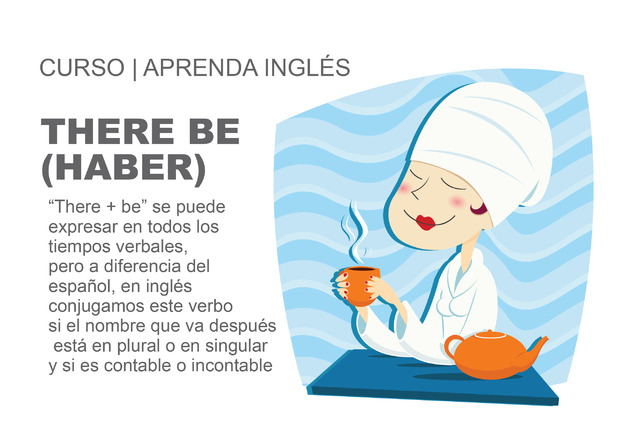There be (Haber)
Utilizamos “there + be” (hay) para hablar sobre la existencia de algo.
“There + be” se puede expresar en todos los tiempos verbales, pero a diferencia del español, en inglés conjugamos este verbo si el nombre que va después está en plural o en singular y si es contable o incontable.
There is
Se utiliza “there is” con nombres contables en singular y con incontables. Hay una forma corta: “there’s”.
Ejemplos:
Contables
There is a pencil. (Hay un lápiz.)
There’s one car. (Hay un coche.)
There is not an apple. (No hay una manzana.)
Is there a pen? (¿Hay un bolígrafo?)
Incontables
There is milk. (Hay leche.)
There is not time. (No hay tiempo.)
Is there sugar? (¿Hay azucar?)
There are
Se utiliza “there are” sólo con nombres contables en plural. No hay una forma corta.
Ejemplos:
There are five pencils.(Hay cinco lápices.)
There are not two cars. (No hay dos coches.)
Are there many people? (¿Hay mucha gente?)
Nota:
Hay algunos tiempos verbales en los que no conjugamos “there be” para indicar plural o singular, contable o incontable.
Estos tiempos verbales son el futuro (“will”), el pasado perfecto y con los verbos modales (ver las lecciones relacionadas con estos tiempos para más información).
There vs. It
Se utiliza “there” cuando hablamos de algo por primera vez, para indicar que existe. Por otro lado, se usa “it” para hablar de una cosa específica.
Ejemplos:
There is a pen on the table. It is my pen. (Hay un bolígrafo en la mesa. Es mi bolígrafo.)
There is a car in the garage. It is blue. (Hay un coche en el garaje. Es azul.)
There is milk. It is in the refrigerator. (Hay leche. Está en la nevera.)
















